Day 1 of a 3-day Spring Migration tour in Norfolk. The weather continues to be cold for now – hopefully that is changing before the tour ends. At least the wind had eased a little from earlier in the week, although it was still moderate and with a distinct chill from the NE. It was grey with intermittent but thankfully very light drizzle in the morning, then we did see the sun at times early afternoon, before it clouded over again and the drizzle returned just as we were heading home. We spent the day in NW Norfolk.
Our first destination this morning was Snettisham. As we walked up along the road, we could hear a Sedge Warbler and a Blackcap singing in the bushes. A Stock Dove was perched on the wires, next to a Woodpigeon providing a nice size comparison and with a Greenfinch singing the other side.
Cutting in to the Coastal Park, a Robin was hopping around on the short grass. It looked a rather grey one, possibly a continental migrant which has spent the winter here. A Lesser Whitethroat was singing in the bushes beyond and the first of several Cetti’s Warblers shouted at us from wherever it was hiding. A Chiffchaff showed nicely.
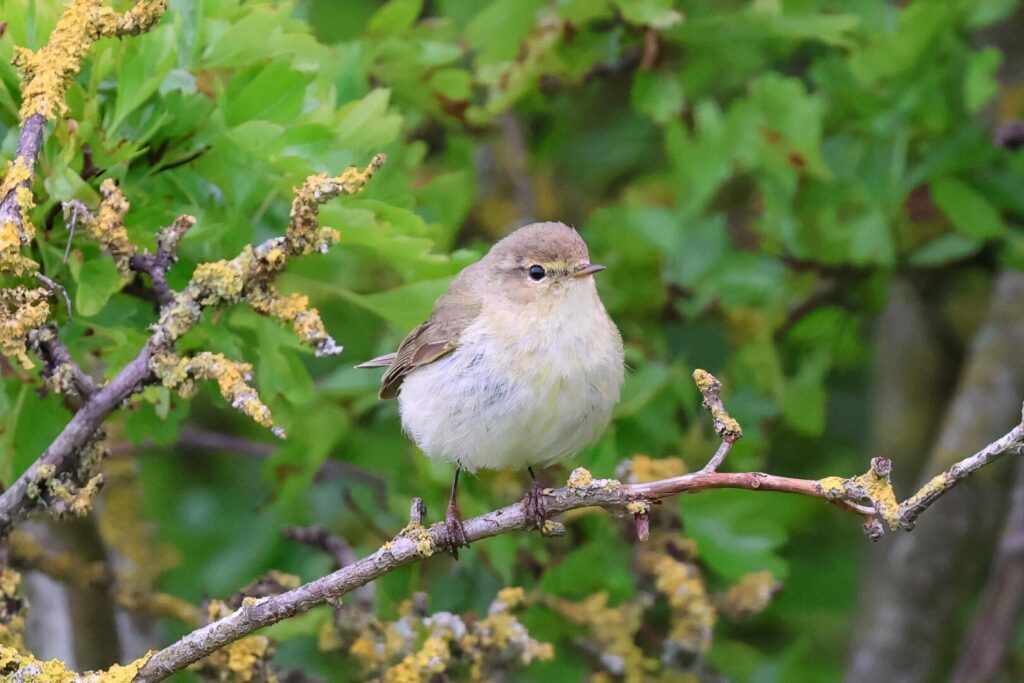
We cut across on the path through the reeds. The Sedge Warblers were both singing in their usual places but keeping well tucked down today. We stopped to see if we could get eyes on the second one and a Common Whitethroat started singing in the bushes beyond. It flew across the path and we could see it working its way through one of the half burnt bushes beyond.
There were lots of Linnets feeding on the grassy area as we continued on. Just beyond, we found another Common Whitethroat in the brambles which eventually came out and perched on the top. It appeared to be collecting nest material, presumably constructing a ‘cock nest’ in the bushes, in advance of the females arriving. There definitely seemed to be more Common Whitethroats back since we were last here just a few days ago.
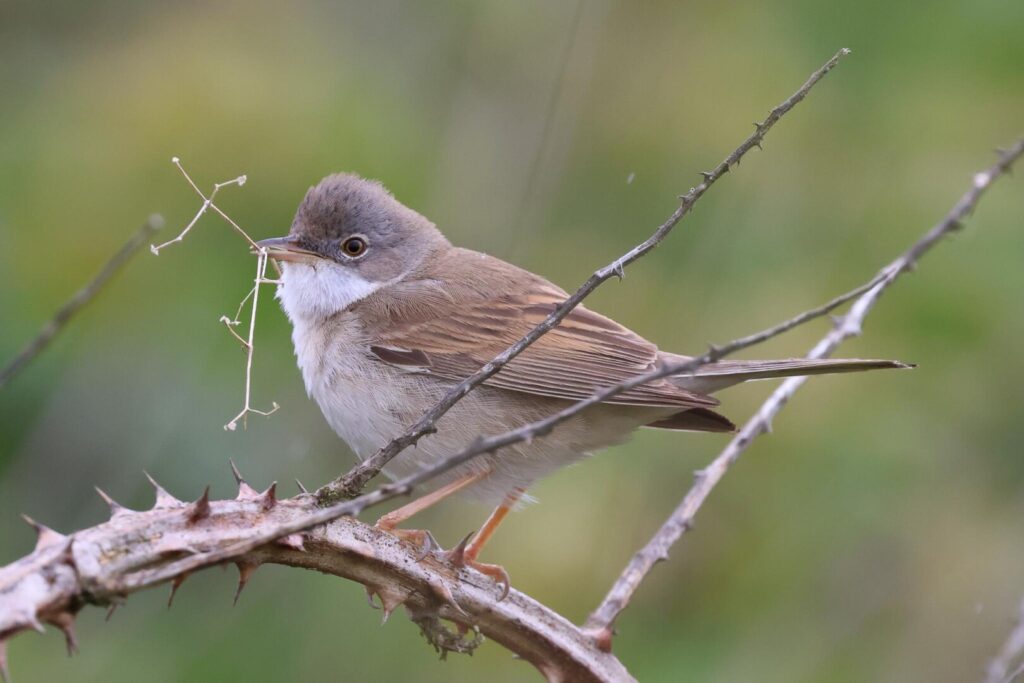
A couple of Meadow Pipits flew up from the grass and one perched on top of a low bramble bush. We were just looking at it when one of the group shouted ‘ibis’ and we turned to see a Glossy Ibis flying up over the inner seawall. We watched as it flew past and then dropped down the other side of the bank, presumably on Ken Hill Marshes. A very nice bonus!
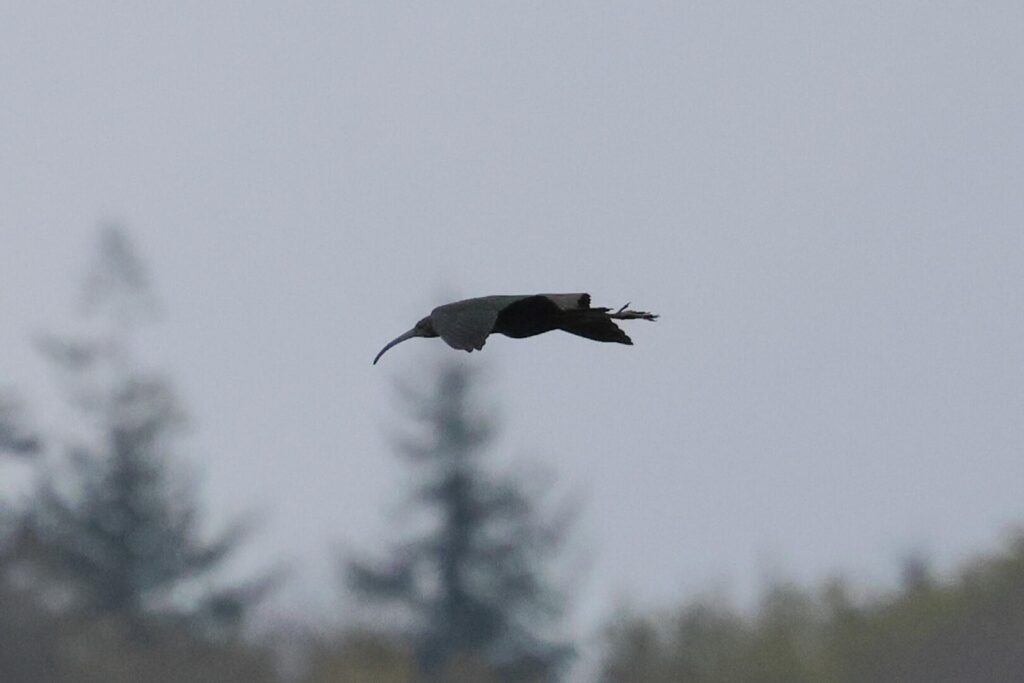
A succession of large flocks of Black-tailed Godwits and pairs of Avocets had flown out from Ken Hill Marshes while we walked up. We continued a little further up and then climbed up onto the outer seawall to have a look at the Wash. Another Meadow Pipit was feeding on the shingle in front of us but the tide was still in – it was a fairly big tide, and backed by the NE wind it was slow to go out today.
As we dropped back down out of the wind into the bushes, we could hear a Blackcap singing and then we had a brief glimpse of a Barn Owl hunting over the inner seawall. It dropped down out of view the other side, so we cut across and climbed up to see if we could find it. It was perched on a fence post when we arrived but quickly too to the air again. We watched it hunting out over the grass, at one point flying in and hovering in front of us before it worked its way further back.
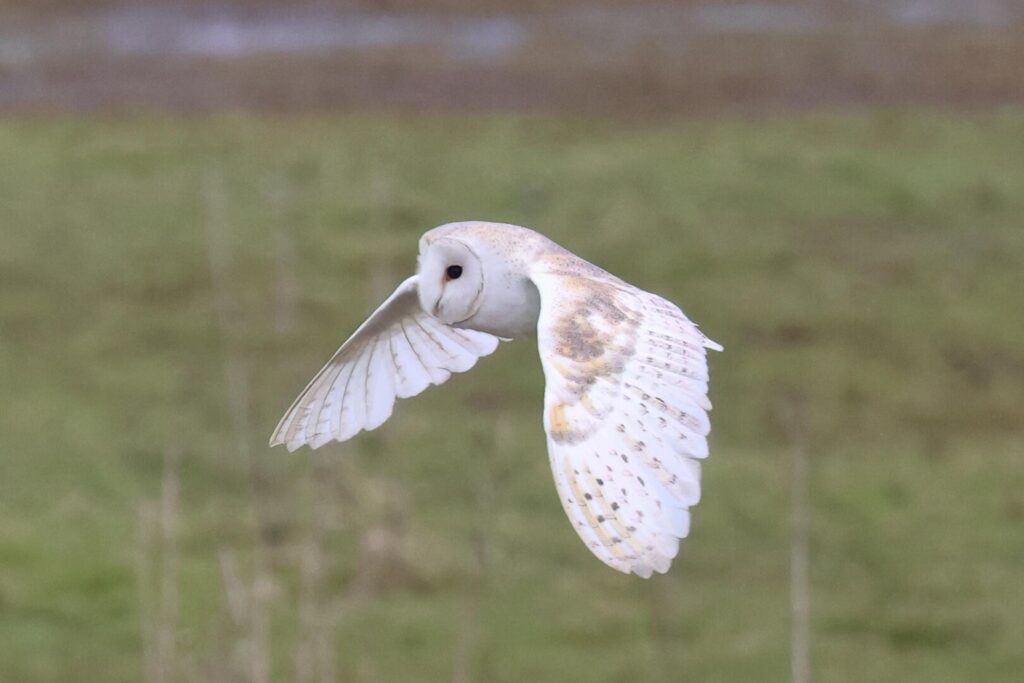
We scanned the grazing marshes but we couldn’t find the Glossy Ibis here now. There were lots of geese, mainly Greylags and Canada Geese, plus a couple of Egyptian Geese, a pair of Barnacle Geese and four Pink-footed Geese. Most of the Pinkfeet have left us for the summer, but a small number linger – we could see that one of these had an obviously damaged wing, presumably having been shot and injured in the past.
There were lots of ducks on the grazing marshes too – Teal, Shoveler, Gadwall. We got the scope on a pair of sleeping Pintail. Two Little Grebes were diving in one of the deeper pools. A couple of Marsh Harriers drifted back and forth and a small group of Swallows were hawking for insects over the back. We walked slowly back along the seawall, although it was quieter until we got almost back to the road, where another Lesser Whitethroat was singing and a male Greenfinch perched on the wires above the path.
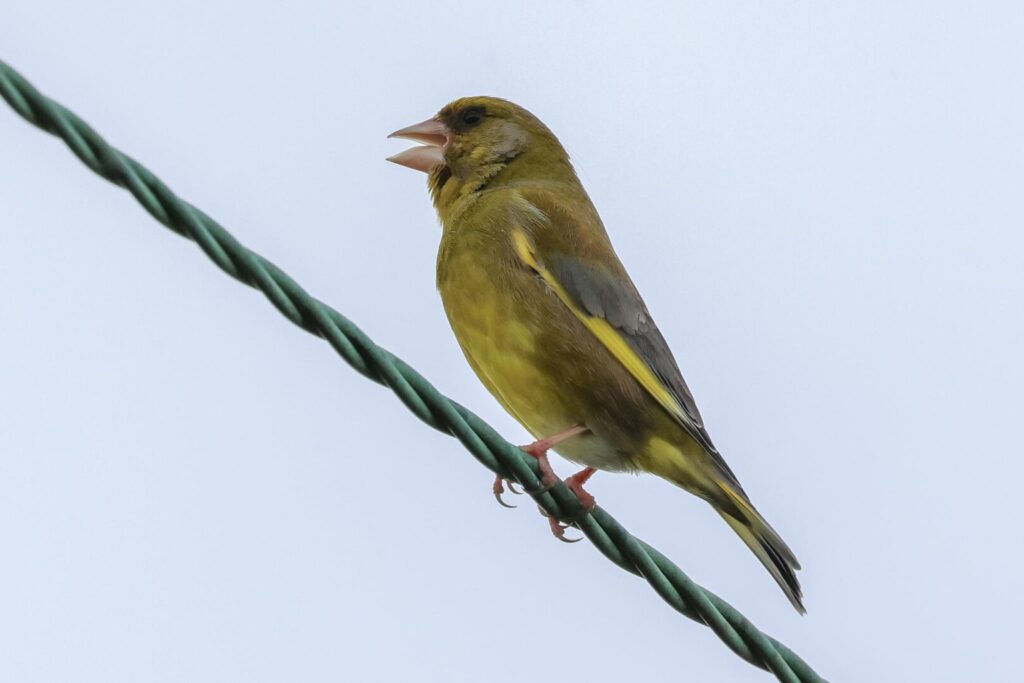
We drove round to Holme next and out to The Firs. By the time we had stopped to use the facilities and checked in at the Visitor Centre, we decided to have an early lunch on the picnic tables and get a welcome hot drink. It was a bit warmer here, out of the wind, and the sun was trying to break through the clouds.
After lunch, we walked out into the dunes. We didn’t have to go far before we found the Ring Ouzels. There were at least five of them again today, three males with bright white gorgets and two browner females. We got the scope on them as they fed in the long grass, before something spooked them and they flew up into the bushes.
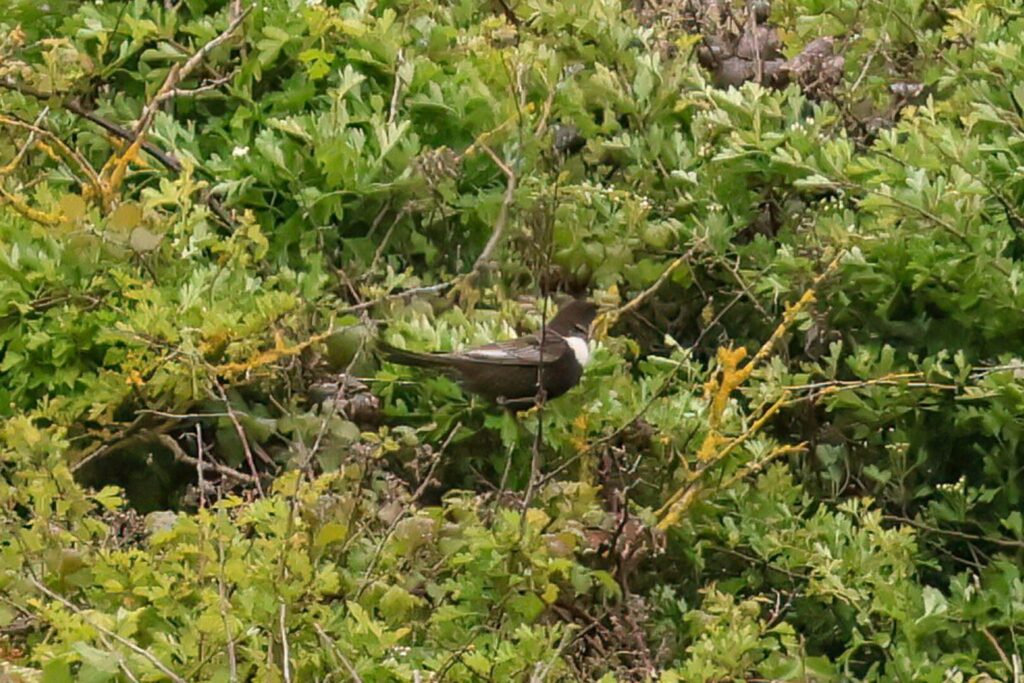
As we walked on, there were lots of Linnets in the bushes with a few Goldfinches. We got the scope on them too, the males variably starting to get some pink or brighter red on the breast now. There were lots of Linnets all through the dunes and a few warblers in now – a couple of Lesser Whitethroats and a Common Whitethroat or two – but no sign of any migrants today. The cold northerly winds have put migration pretty much on hold at the moment. A couple of males Stonechats perched up obligingly.
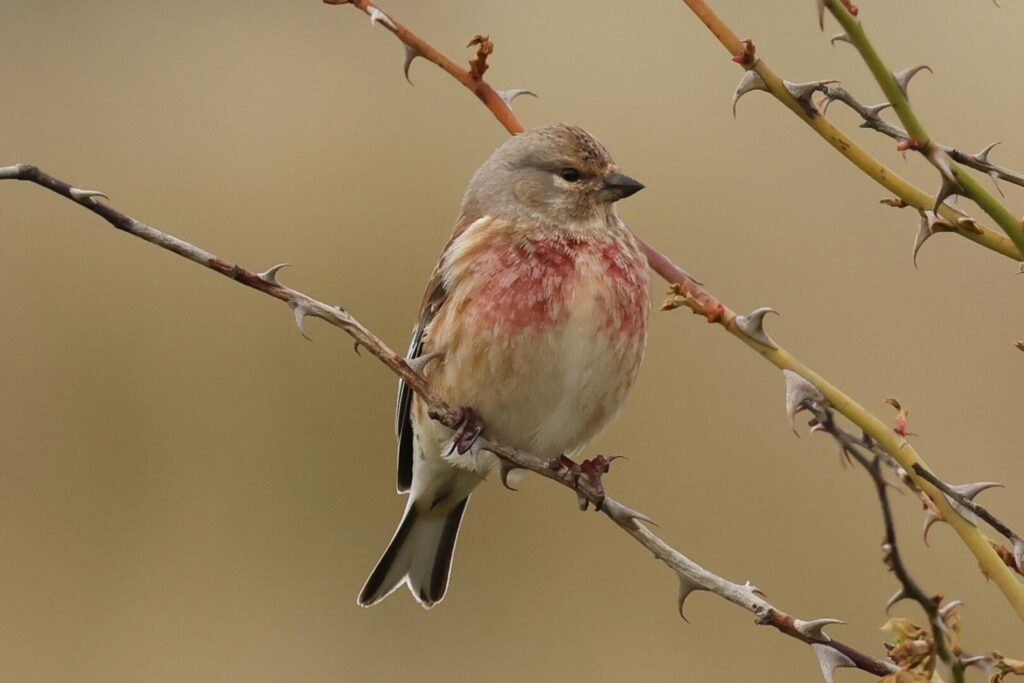
We scanned the beach and the sea from the top of the dunes but there was not much out there today and it looked windy. So we cut back into the dunes, back through the middle where our first Wall butterfly of the year was basking in a sheltered spot and a Green-veined White was a little further on. Then we cut across to the hides the other side of the road. Another Lesser Whitethroat was singing here and we even had a couple of brief glimpses of this one.
There were a few ducks on the pools, mainly Teal but a Wigeon was with them, and Shelduck. Several Avocets were feeding in the water but there were no other waders on here today. A Merlin appeared briefly above the trees beyond, but turned and dropped down steeply where we lost sight of it. A smart pale male Marsh Harrier drifted across just behind the pools but didn’t come in after the snack-size goslings which were with their Greylag parents. As we walked out of the hide, another male Marsh Harrier was displaying high overhead, tumbling acrobatically.
Back to the minibus, and we drove round to Thornham Harbour. It had clouded over again and up on the seawall, we were more exposed to the wind. The first birds we saw were seven Cattle Egrets in with the cows, so we got the scope on those, admiring the bright orange patches on their heads and backs now.
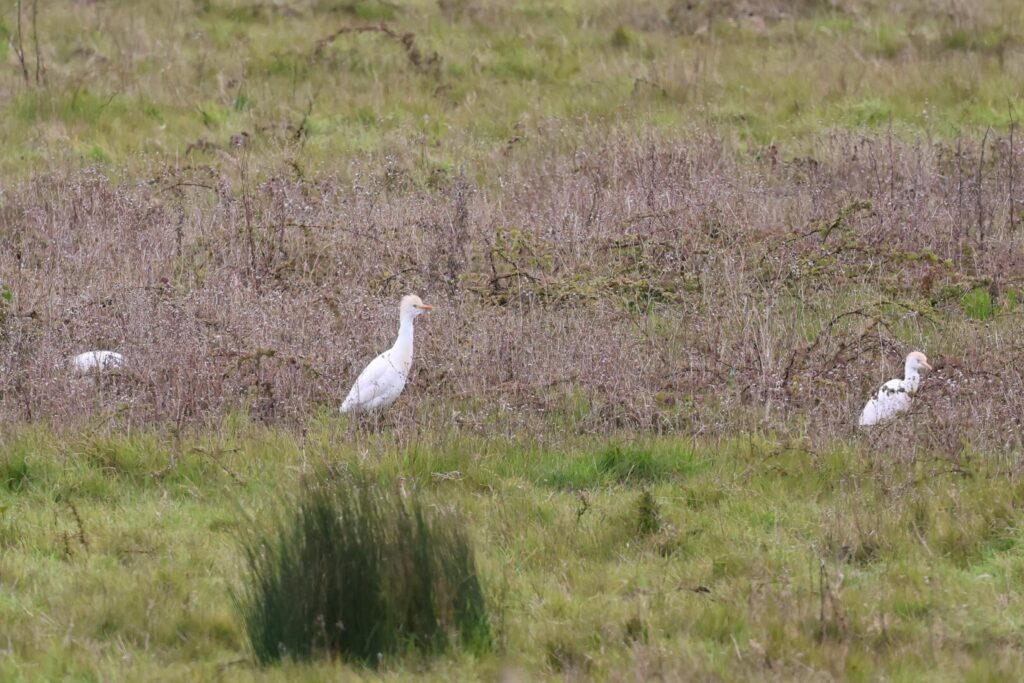
While we were watching the Cattle Egrets, a quick scan revealed a group of a dozen Whimbrel feeding in the grass in the field next door. So we turned the scope on those next and admired their humbug-striped heads.
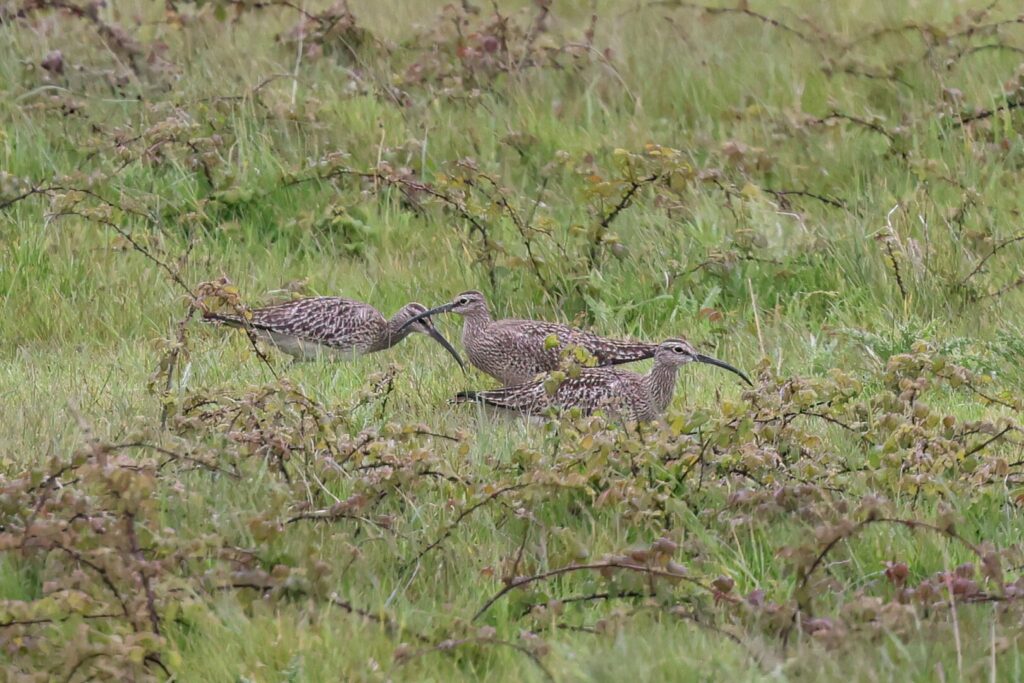
Walking up to the first pool, we quickly located the pair of Garganey. Closer to the path today, we had a really good view of them, the male with its bold white-striped head and delicate plumes over its back, the female browner but with a strongly-marked face pattern. Just a single Black-tailed Godwit was on here today too.
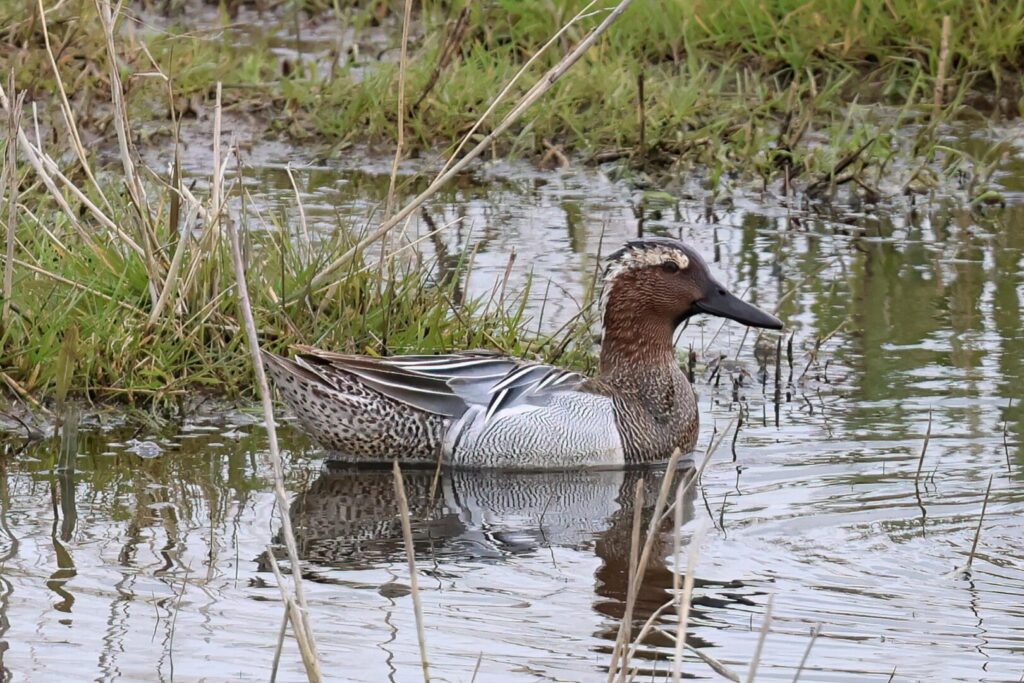
Further up, we stopped again to scan the next pools. First we found a stunning male Ruff, black and buff, moulting into breeding plumage. There were several more further back, at least two more males, all differently coloured, and a single smaller, browner female. There were two or three Little Ringed Plovers on the pools too.
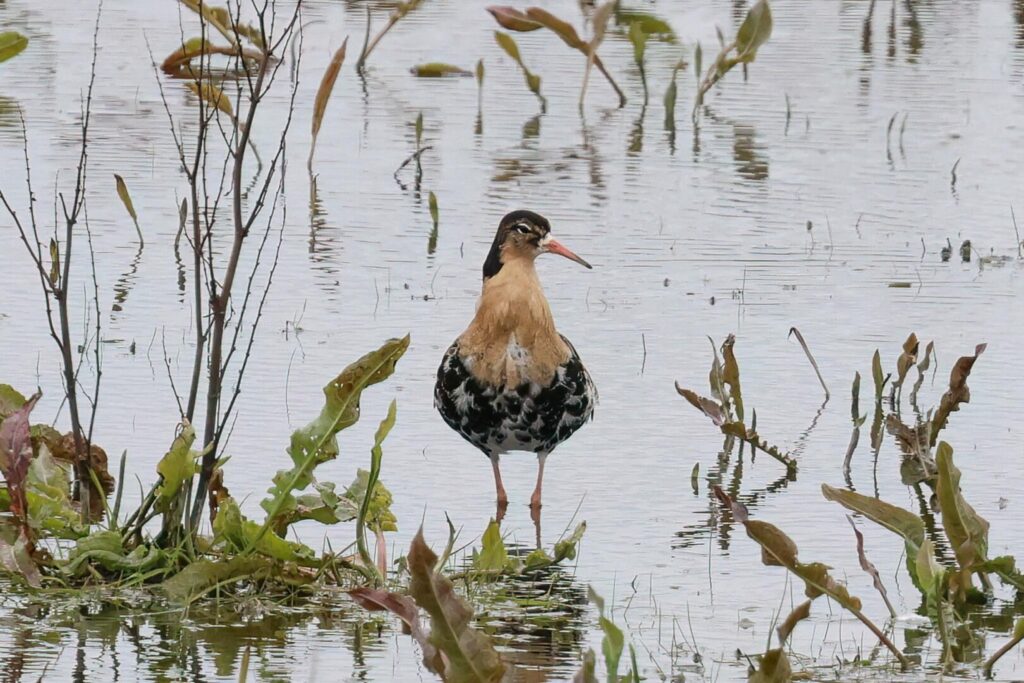
There were lots of hirundines hawking low over the water, probably struggling to find many flying insects in the cold conditions. They were still mostly Swallows, but with more white-rumped House Martins today and at least one brown-backed Sand Martin in with them.
A couple of the group had seen a Spoonbill fly up from the main harbour channel as we walked out, but it had dropped down out of view and we couldn’t find it again. There were still lots of Brent Geese out over the saltmarsh and a pair of Avocets in the muddy channel next to the path. A single Grey Plover flew in and landed nearby.
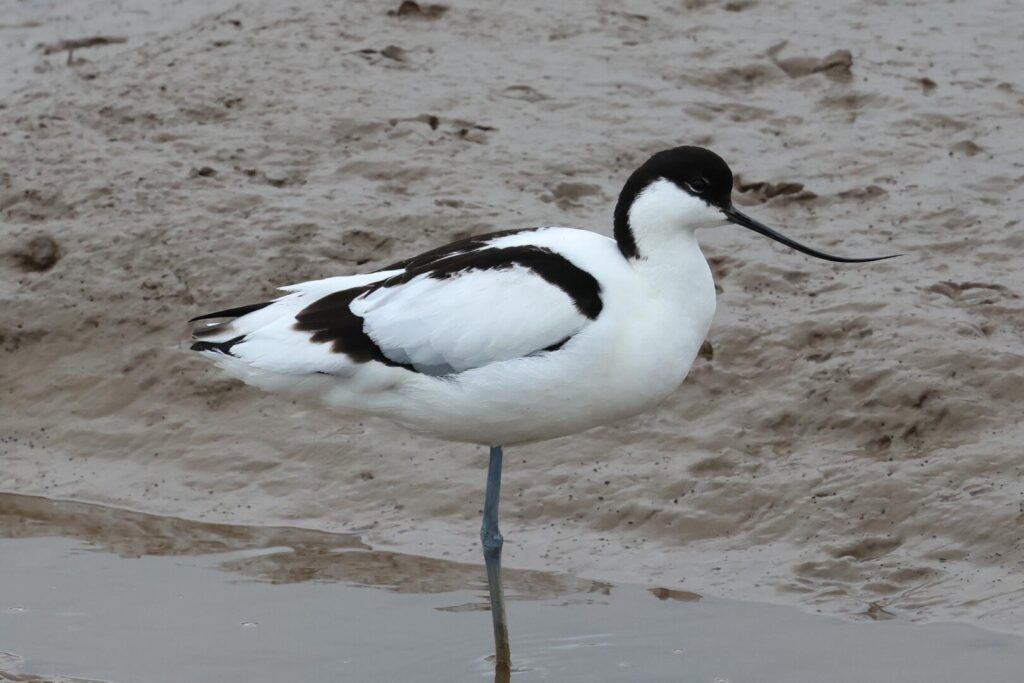
We could see darker clouds approaching from the east and it started to spit with drizzle, so we made our way back to the warmth of the minibus. The Garganey were still feeding on the pool and the six Cattle Egrets were standing in the field in a group looking cold.
On our way back we cut inland towards Choseley and scanned the fields. There were lots of Red-legged Partridges still, a significant surplus this year from the shooting season, and a pair of Roe Deer. There were few birds in the hedges, a brief Yellowhammer which dived straight in to cover before anyone could see it, and nothing singing now. By the corner sown with a cover crop, we found a big flock of Linnets feeding on the edge of the field and perched on the wires.
Then it was time to head back for tea and cake!
















